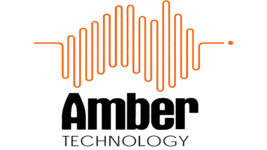TECH TALK
30 Apr 2024
A PA System Tech’s Secret Weapons
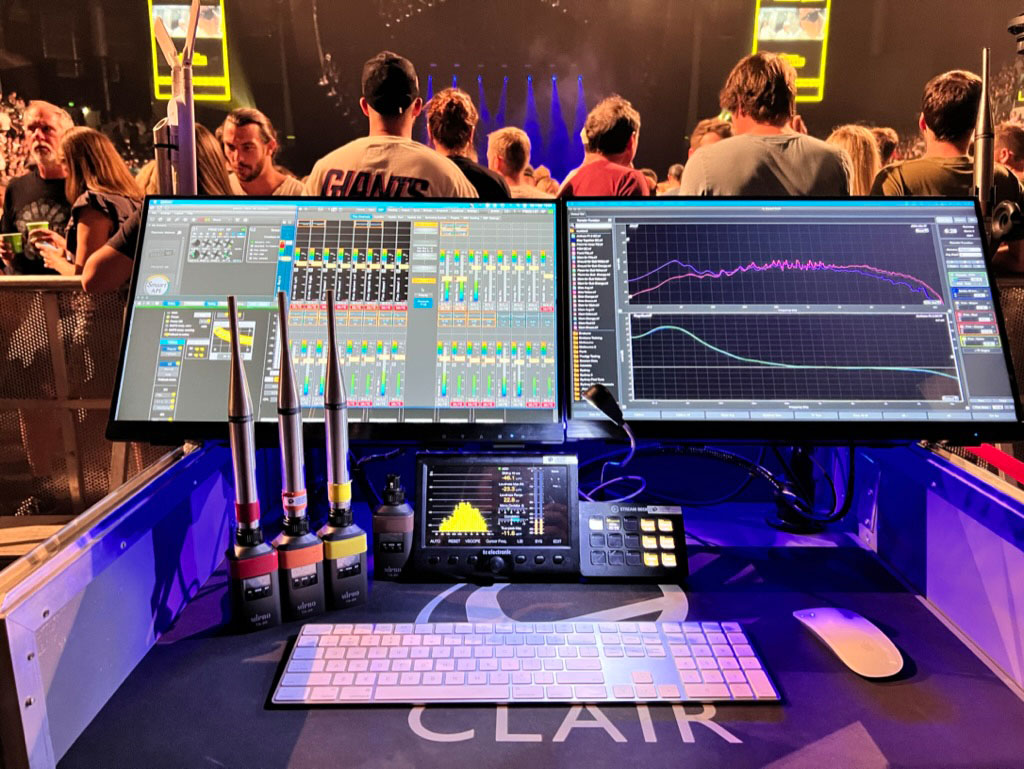
Subscribe to CX E-News
I love it when you find out someone’s using a bit of gear in a way that you never thought of, and getting a result you never would have expected. I got tipped off that globe-hopping, Perth-based PA system tech and crew boss Christian Peterson had something in his travelling rack that might surprise me, and I should give him a call.
I managed to touch base with Christian in a rare week he was actually at home. He’d just come back from the Australian leg of Blink 182’s tour, which he will soon be jumping back onto for a South American/Mexico/USA stint. In recent years, he’s worked with twentyone pilots, boygenius, Foo Fighters, and Cirque du Soleil. He is in demand internationally, and the contents of his system and measurement rack should be of interest to anyone who wants to keep up with current best practice in PA deployment.
Without keeping you in further suspense, the secret weapon in the rack is…. a 1RU, 4 channel, MIPRO ACT-848 wireless receiver. I’m assuming that, like me, you’re used to seeing the brand MIPRO on portable loudspeakers with wireless mics in schools and shopping centres, but not so much in professional applications. Why is a world-class system tech rocking the MIPRO brand proudly on some of the world’s biggest stages?
“It’s funny you should say that,” chuckles Christian, “A buddy of mine was down in South America with me last year, he had a channel of MIPRO in his rack. The local system engineers were laughing at him; ‘Ha ha, MIPRO!’ kind of thing, And he’s like, ‘don’t knock it ‘til you’ve tried it’.” A little digging on the internet reveals that the MIPRO receivers are a cult-like secret weapon for savvy systems techs all over the world.
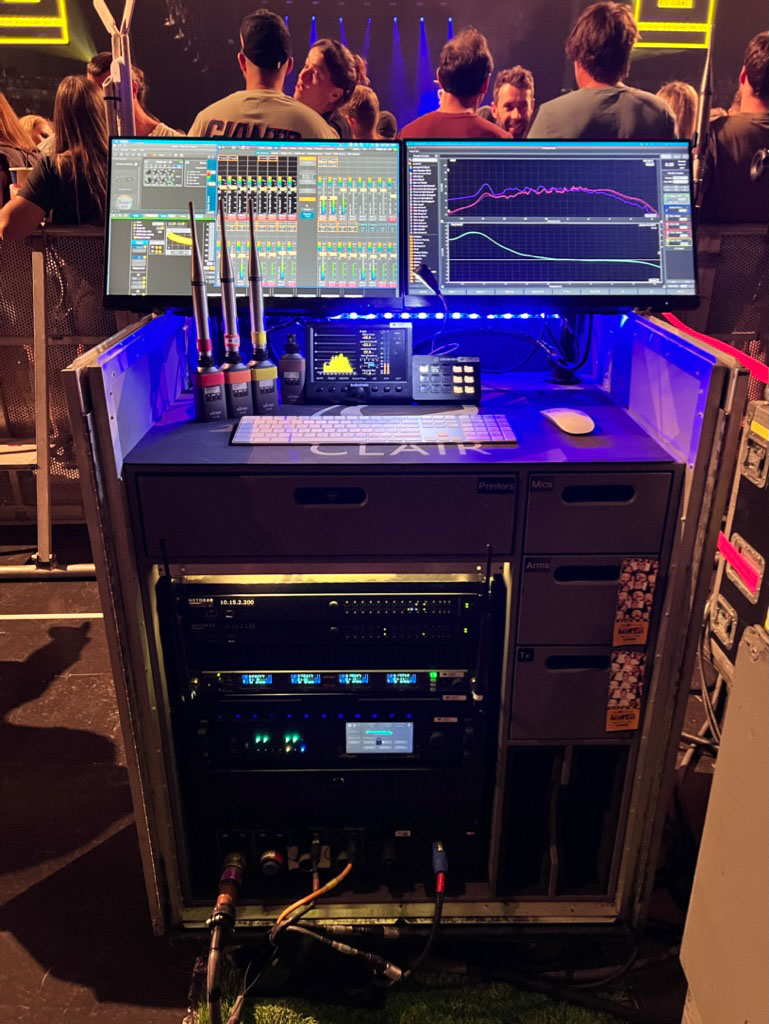
Christian is using the MIPRO receiver in his SMAART measurement rig. “They’re digital, they don’t compand, and they have a great plug-on transmitter option,” explains Christian. “That’s three things that are very hard to find in any other product at the same time. Especially without the companding; anything that compands you can use for time alignment, but is useless for frequency response. With this system, I can throw any mic on any one of those plug-on transmitters; they’re matched in gain and response well beyond the amount I need them to be to trust them. An in terms of value for money, you can’t match the MIPRO approach.”
Being in front of all of the big PA names on the planet, Christian has to have the I/O options to stay flexible. “The other cool thing about the MIPRO ACT-848 is that there are Dante options, AES, and analogue out. My SMAART setup revolves entirely around Dante.”
So how did Christian discover this little-known MIPRO hack? “I’d seen the product before COVID,” reveals Christian. “I was interested, but never acted on it. Post-COVID, I was using other products and getting variable results. I spent every single day putting up three or four microphones, and having to re-measure them to work out what was different between them that day. So, in the end, I decided to try MIPRO, because it was my money and price was definitely a consideration. It’s worked brilliantly.”
The all-important measurement mics sitting on the end of Christian’s MIPRO transmitters are four Earthworks M30s. “The best thing about this system is that you stick them on the ground to take a ground plane measurement, and there’s less than 0.1dB between them.
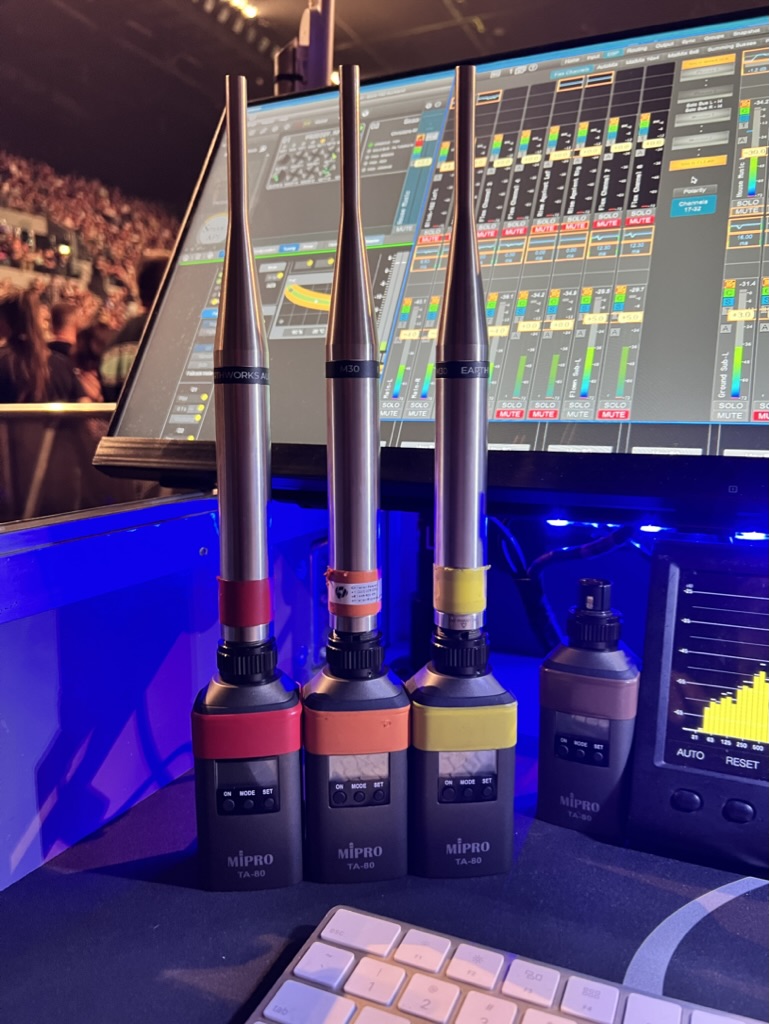
And if you’ve got the calibration file loaded into SMAART, it’s rendered null. They’re total workhorses; they do get thrown around a bit, but they come up clean every single time. I do a measurement once every month to verify them, and they’ve never failed me once.”
Christian’s measurement process is as follows; “I take four to six measurements on-axis of the main hang,” outlines Christian. “I then take a timing measurement between the main and the side. I do another four on the side, another one between the 270 and the side, and then another four on the 270. And the great thing is I can go through, take all those measurements and trust that every single mic is reading as it should. But the really great thing is that if we have any upstage fills or delays that are going in later, I can keep working offline with the previous measurements and I don’t have to use the exact same microphone every single time.”
Working in stadiums and arenas involves a lot of range, and Christian definitely gets his steps in. “The range with just the standard whips that come with MIPRO receiver is great,” confirms Christian. “That’s all I use for the stadiums and arenas I’ve been doing. I get about three shows on one battery charge with the plug-on transmitters, and that’s with full 48V phantom running the M30s. I just recently time aligned the entire Lollapalooza Brazil site using only these two whips. It only cut out past the second ring of delays!”
Another cornerstone of Christian’s rack is a DirectOut PRODIGY.MP multifunction audio processor. “There’s nothing I’ve found that has quite the amount of processing abilities and I/O options,” reports Christian. “The clocking is incredible; I’ve found the clock on it to be more reliable than every other piece of gear we’ve got in the rig. The PRODIGY.MP receives all the various inputs from the consoles and sends to the PA outputs. It outputs to the SMAART rig via Dante. I’ve got 16 channels I can send to SMAART for all sorts of measurement options. It’s an extremely streamlined system, and its input managing options are absolutely incredible.”
The PRODIGY.MP’s output options mean Christian is covered no matter what PA he’s in front of. “I spent most of last year sending AES to L-Acoustics M1 processors,” Christian illustrates. “From there it was AVB to the LA12X’s, and now this year it’s been mostly d&b audiotechnik, with AES via Dante to D80’s. Keeping fluent in both of those worlds is really important. This is the only way I can do that, especially with the PRODIGY.MP having both a Dante card and an AVB card. I can switch between the two, but the front-end processing remains entirely the same.”
Keeping the rig running is a Netgear AV Line M4250 network switch. “Everything goes via the NetgearAV switch,” extolls Christian. “The Dante network, the AVB network; I’ve got those split across two VLANs on the switch with a couple of management ports. I’ve got a couple of Ubiquity wireless access points, so I can carry a tablet around the whole venue, listening and adjusting. I’ve got PoE on them all, so all of my wireless access points just power straight up from that. The beauty of the NetgearAV switches is that they’re so easy to programme.”
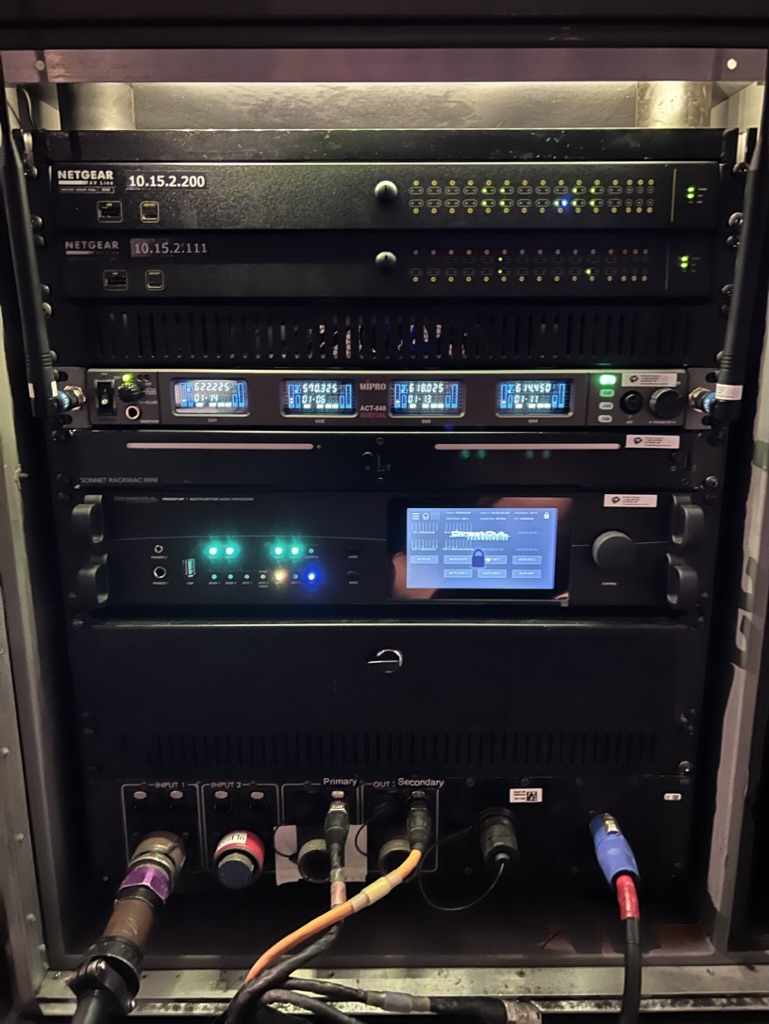
Christian’s ingenious rig is all about delivering the best workflow for him and his crew, and the best experience for the audience. “The festivals I’ve got coming up are a perfect example,” offers Christian. “I’m going to be doing some on d&b rigs, l’Acoustics, Meyer, EAW and JBL. I can say to the crew ‘give me eight lines into your system,’ and I have control over every single discrete output. It really helps me with my measurements to get the consistency the FoH engineer needs. I can give someone analogue, and AES, and Dante, and AVB. I can even give them coaxial MADI in and out if I want to. I’ve upgraded to the Unlimited license which enables OSC for the PRODIGY.MP, so I can use a software with it called Companion, from Bitfocus. It’s incredible at simplifying tasks between devices, using a wide variety of protocols. Given the native support for SMAART API and OSC on the PRODIGY.MP- I can walk around with my iPhone controlling SMAART and the PRODIGY. MP to unmute, take measurements, and move on. The workflow is just wild!”
I agree. In Christian’s own words, this is all very, very cool.
Subscribe
Published monthly since 1991, our famous AV industry magazine is free for download or pay for print. Subscribers also receive CX News, our free weekly email with the latest industry news and jobs.

